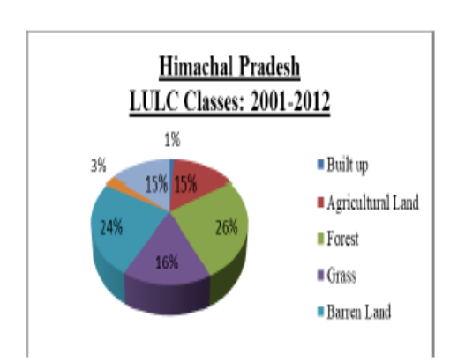
Geographical analysis
Department of Geography & GIS

Department of Geography & GIS

Geographical analysis
DOI: 10.53989/bu.ga.v11i1.22.3
Year: 2022, Volume: 11, Issue: 1, Pages: 10-17
Original Article
Aparna 1*, Shahnawaz2
1Student, Department of Geography, Central University of Karnataka, India
2Senior Scientist, Department of Geoinformatics – Z_GIS, University of Salzburg, Austria
*Corresponding Author
Email: [email protected]
Received Date:10 January 2022, Accepted Date:19 May 2022
Himachal Pradesh is a highly mountainous state located in the northern part of India and receive snow fall during winter season. Studying Snow Cover Variation in this region is important because it has an impact on both climate and water management and thus the life of the people. The study has been carried out using MODIS eight day (MOD10A2) snow cover data, ASTER DEM data has been used to study the Snow cover area variation with elevation, and also to do slope and aspect analysis of Himachal Pradesh. The snow extent data of eight day periods are summed up to get approximate monthly data for easy handling and analysis. Then Snow Cover Area (SCA) is calculated for each month during ten years time period from 2005 to 2015. The general trend observed is the SCA is increasing from January to March and from March it starts decreasing till August and again from September to December it increases. Generally, Snow cover is maximum in the month of March and minimum in the month of August except few years like in 2008, 2009, 2014 and 2015 it is maximum in February month, whereas in 2011 it is observed to be maximum in the month of January. The Maximum SCA is found in 2013 March i.e. calculated as 40246.57 square kilometre in this whole eleven year time period from 2005 to 2015 and the minimum snow cover was also observed in the same year 2013 September which is estimated to be 6545.80 square kilometres.
Keywords: Snow Cover Area Variation In Himachal Pradesh, MODIS Eight Day (MOD10A2) Snow Cover Data, ASTER DEM, Maximum and Minimum Elevation Snow Cover Area Reached
© 2022 Aparna & Shahnawaz. This is an open-access article distributed under the terms of the Creative Commons Attribution License, which permits unrestricted use, distribution, and reproduction in any medium, provided the original author and source are credited.
Published By Bangalore University, Bengaluru, Karnataka
Subscribe now for latest articles and news.